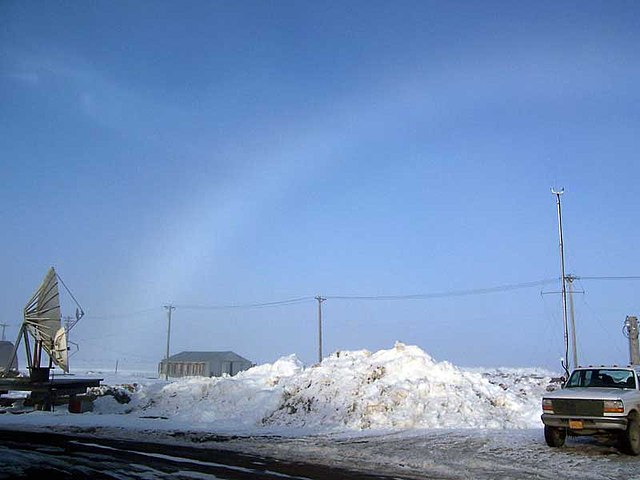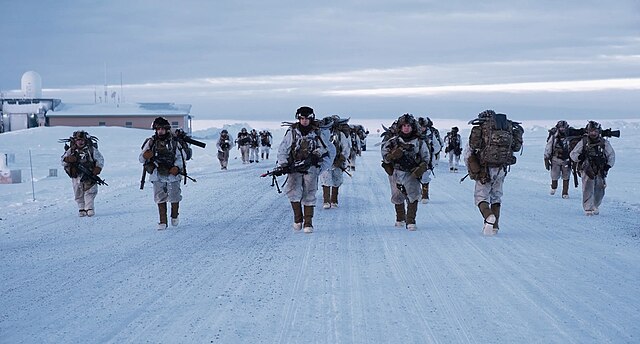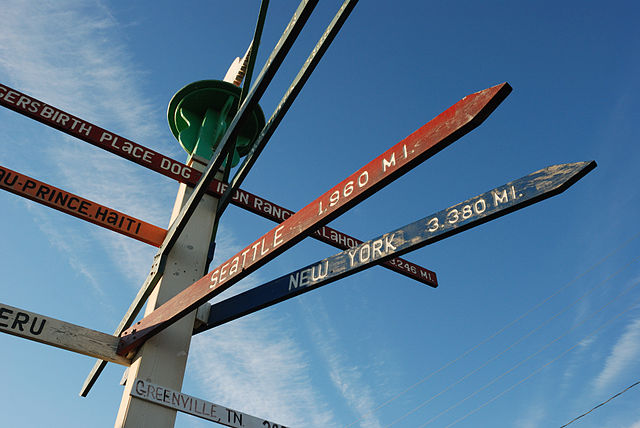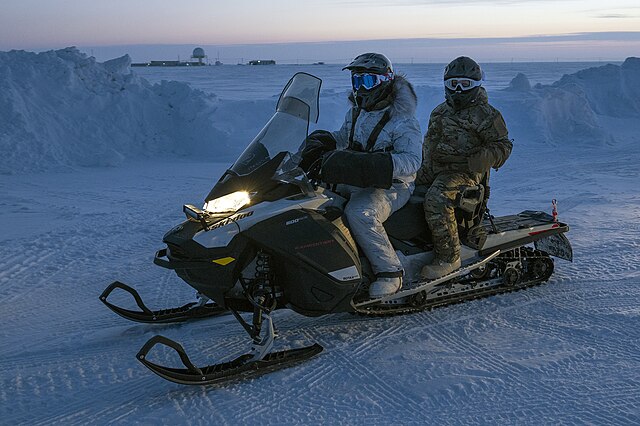Imagine standing at the edge of the world, where the sun doesn’t set for two months, and winter brings months of darkness. That’s Barrow, Alaska (now officially Utqiaġvik), the northernmost town in the United States, perched above the Arctic Circle. The weather here isn’t just a forecast—it’s an adventure. From bone-chilling winters to surprisingly mild summers, Barrow’s climate is a wild ride of extremes that shapes life in this remote community. Whether you’re planning a visit to chase the northern lights or curious about living in this Arctic outpost, understanding Barrow’s weather is your first step. So, what makes this place so unique? Let’s dive into the icy, windy, and fascinating world of Barrow, Alaska’s weather.
Why Barrow’s Weather Is Unlike Anywhere Else
Barrow’s weather is like a moody poet—dramatic, unpredictable, and deeply unforgettable. Sitting at 71.29°N, it’s one of the northernmost places on Earth, and its Arctic climate delivers conditions most of us can barely imagine. Winters are long and brutal, with temperatures plunging to -19°F on average, while summers are short and chilly, rarely climbing above 47°F. The Arctic Ocean keeps things damp and foggy, and the polar night and midnight sun add a surreal twist. Ever wondered what it’s like to live where the sun doesn’t rise for two months? Let’s explore what makes Barrow’s weather so extraordinary.
The Arctic Climate: A World of Extremes
Barrow’s Arctic climate is like living on another planet. Winters stretch from October to May, with temperatures often dipping below -20°F and wind chills that feel like a slap from an ice giant. Summers, from June to August, are brief and cool, with highs around 40°F to 47°F. The Arctic Ocean moderates temperatures but brings constant moisture, leading to fog, snow, and ice. Precipitation is low—about 5 inches annually—but it often comes as snow or freezing drizzle. This climate isn’t just weather; it’s a lifestyle that demands resilience and preparation.
The Polar Night and Midnight Sun
Barrow’s location above the Arctic Circle means it experiences two months of polar night (mid-November to mid-January), when the sun doesn’t rise, and two months of midnight sun (mid-May to mid-July), when it never sets. Imagine waking up to twilight for weeks or barbecuing at midnight under a bright sky—it’s like nature’s playing a cosmic prank. These phenomena affect everything, from daily routines to mental health, making Barrow’s weather a unique blend of beauty and challenge.
Seasonal Weather Patterns in Barrow

Barrow’s seasons are like chapters in an epic novel, each with its own drama and surprises. Let’s break down what you can expect throughout the year and how to prepare for each season’s quirks.
Winter: A Frozen Wonderland
Winter in Barrow is the main event, lasting from October to May. Temperatures average -19°F, with lows sometimes hitting -36°F or colder. Snow accumulates steadily, often whipped into blizzards by winds gusting up to 25 mph. It’s like stepping into a freezer with a wind turbine. The polar night adds a layer of darkness that can feel endless, but the aurora borealis often steals the show, painting the sky with vibrant greens and purples. If you’re visiting, winter is a test of endurance but a chance to witness nature’s raw power.
Surviving Barrow’s Winter Weather
Surviving a Barrow winter is like preparing for a polar expedition. You’ll need heavy-duty gear: insulated parkas, thermal boots, and gloves rated for subzero temps. Locals layer like pros—think wool base layers, fleece mid-layers, and windproof outer shells. Ever tried walking into a -30°F wind? It’s like pushing against a frozen wall. Keep a winter survival kit in your car, with blankets, food, and a flashlight, as blizzards can strand you in minutes. Checking forecasts from sources like the National Weather Service is a must to avoid getting caught off guard.
Spring: A Gradual Awakening
Spring in Barrow, from April to May, is less about flowers and more about a slow thaw. Temperatures climb into the 10s and 20s, but snow and ice linger. The sun starts to peek above the horizon, ending the polar night, and days get longer fast. It’s like the Arctic is waking up from a long nap, but it’s still grumpy. Fog and freezing drizzle are common, and sudden snowstorms can still hit, so don’t pack away your winter gear just yet.
Spring weather in Barrow can be a tease—one day it’s sunny and 25°F, the next it’s a snowy 10°F. Versatility is key. Pack layers that can handle both chilly mornings and slightly warmer afternoons. If you’re out exploring, watch for icy patches on roads and trails; they’re like hidden traps waiting to trip you up. Locals recommend keeping an eye on weather apps like AccuWeather for real-time updates, as conditions can shift faster than you can zip up your jacket.
Summer: A Brief Arctic Bloom
Summer in Barrow, from June to August, is as warm as it gets, with highs reaching 47°F and occasionally touching 60°F. The midnight sun keeps the sky bright 24/7, creating a surreal, endless day. It’s like living in a world where time forgets to turn off the lights. Fog and drizzle are frequent, thanks to the Arctic Ocean, but clear days reveal stunning views of the tundra. This is the time for hiking, fishing, or spotting wildlife like polar bears and caribou, but you’ll still need a jacket.
Making the Most of Barrow’s Summer
Summer is Barrow’s golden window for outdoor fun. The mild temps and constant daylight make it perfect for exploring the Arctic landscape. Pack lightweight, waterproof clothing—think breathable rain jackets and sturdy boots. Mosquitoes can be a nuisance, so bug spray is your best friend. Ever tried swatting a mosquito swarm at 2 a.m. under a bright sun? It’s a Barrow rite of passage. Check forecasts daily, as fog can roll in fast, cutting visibility to near zero.
Fall: A Quick Slide to Winter

Fall in Barrow, from September to October, is a short transition. Temperatures drop back into the 20s and 30s, and snow starts to creep in by late September. The tundra glows with autumn hues, but the Arctic Ocean’s influence means wet, windy days are common. It’s like the weather’s in a rush to get back to winter. This is a quieter time for visitors, but it’s perfect for those who want to see the Arctic’s raw beauty before the deep freeze sets in.
Extreme Weather Events in Barrow
Barrow’s weather isn’t always calm—it can throw some serious curveballs. From blizzards to coastal storms, the Arctic keeps residents and visitors on their toes.
Blizzards and Whiteouts
Blizzards are Barrow’s winter trademark. Winds up to 25 mph or more can whip snow into a frenzy, creating whiteout conditions where you can’t see your hand in front of your face. It’s like being stuck in a snow globe someone shook too hard. These storms can shut down roads and ground flights, so always have a backup plan. Locals keep emergency supplies like food, water, and heat sources on hand, and visitors should do the same.
Coastal Storms and Erosion
The Arctic Ocean isn’t just a pretty backdrop—it can be a beast. Fall and winter storms often bring strong winds and storm surges that erode Barrow’s coastline. It’s like the ocean’s trying to reclaim the land. These events can flood low-lying areas and damage infrastructure, so stay away from the shore during storm warnings. The town has been working on protective measures, but nature still calls the shots.
How to Prepare for Barrow’s Weather
Barrow’s weather doesn’t play nice, so preparation is your secret weapon. Whether you’re a local or a visitor, here’s how to stay one step ahead of the Arctic elements.
Gear Up for the Arctic
Your wardrobe in Barrow needs to be Arctic-tough. Winter calls for insulated parkas, thermal boots, and face masks to protect against windburn. Summer requires waterproof layers and sturdy shoes for muddy trails. Think of your gear as your shield against the elements—it’s got to be battle-ready. Sunglasses are a must year-round, thanks to snow glare in winter and constant daylight in summer.
Stay Weather-Aware
Barrow’s weather can change faster than a sled dog sprinting across the tundra. Apps like Weather Underground or the National Weather Service provide real-time updates to keep you in the know. Ever been caught in a sudden fog bank? It’s like walking into a cloud. Always check the forecast before heading out, especially for outdoor activities like hiking or snowmobiling, and keep a portable charger for your phone in case you’re stuck somewhere.
Barrow’s Weather and Local Life

In Barrow, the weather isn’t just something to talk about—it’s a way of life. It shapes traditions, activities, and the community’s spirit.
Cultural Events and the Weather
Barrow’s Inupiat heritage is deeply tied to the weather. Events like the Nalukataq whaling festival in spring depend on stable ice conditions for traditional activities. Winter’s darkness brings community gatherings to celebrate the aurora, while summer’s midnight sun fuels outdoor festivals. It’s like the weather sets the stage for Barrow’s cultural heartbeat. Visitors can join in, but always dress for the conditions—nobody wants to shiver through a celebration.
How Locals Thrive in the Arctic
Barrow’s residents are like weather warriors, adapting to the Arctic’s challenges with skill and grit. They stockpile supplies for winter storms, use snowmachines for travel, and make the most of summer’s light for hunting and fishing. It’s like they’ve cracked the code to thriving in one of the harshest climates on Earth. Visitors can learn from their resilience—always plan ahead and respect the power of nature.
Climate Change and Barrow’s Future
The Arctic is warming faster than most places, and Barrow is on the front lines. Rising temperatures are melting sea ice, increasing coastal erosion, and shifting wildlife patterns. Storms are becoming more intense, and permafrost thaw is threatening infrastructure. It’s like the Arctic is rewriting its own rules, and Barrow’s adapting to keep up. If you’re visiting, stay informed about these changes—they affect everything from travel safety to local ecosystems.
Best Times to Visit Barrow for Weather
Choosing when to visit Barrow depends on what you’re chasing. Summer (June to August) offers mild temps and 24-hour daylight, perfect for exploring the tundra or spotting wildlife. Winter (December to February) is for aurora hunters and those who want to experience the polar night’s magic. Spring and fall are quieter, with transitional weather that’s great for adventurers who don’t mind a challenge. Whatever you choose, pack for the unexpected—Barrow’s weather loves a surprise.
Conclusion
Barrow, Alaska’s weather is a force of nature, shaping life in this Arctic town with its extremes and unpredictability. From the endless darkness of polar night to the relentless light of the midnight sun, every season brings its own challenges and wonders. Whether you’re braving a winter blizzard, hiking under a summer sun that never sets, or marveling at the aurora, Barrow’s climate is an experience like no other. By gearing up, staying informed, and embracing the Arctic’s wild spirit, you can make the most of this unique destination. So, are you ready to face Barrow’s weather and discover its magic? Pack your warmest layers and dive in.
Frequently Asked Questions
1. What’s the coldest month in Barrow, Alaska?
February is typically the coldest, with average lows around -19°F, though wind chills can make it feel much colder.
2. Does Barrow have 24-hour daylight in summer?
Yes! From mid-May to mid-July, the midnight sun means the sun never sets, giving you constant daylight.
3. How much snow does Barrow get?
Barrow sees about 37 inches of snow annually, with most falling from October to May, often accompanied by strong winds.
4. Is Barrow’s weather safe for tourists?
It can be safe with proper preparation. Winter requires extreme cold gear, and summer needs layers for sudden changes.
5. How can I check Barrow’s weather before visiting?
Use trusted sources like the National Weather Service, AccuWeather, or Weather Underground for accurate, real-time forecasts.

